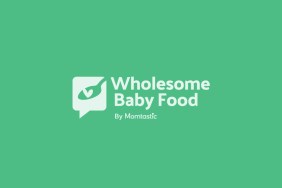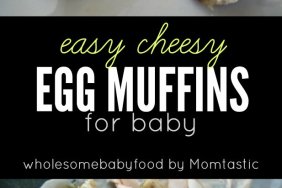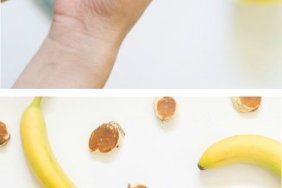Iron and Your Baby – Could your baby be at risk for Iron deficient anemia?
Your baby is eating solid foods and now you’re wondering about Iron and your baby. Vitamin C aids in the absorption of Iron so try to include fruits and vegetables whenever possible. It is important to know that babies who may be at risk of anemia fall into the following categories:
- Babies that were born premature; iron stores build in the last few months of pregnancy.
- Babies who had a low birth weight regardless of being “full term”. and
- Infants whose mothers were of poor nutritional status during pregnancy or who have diabetes.
So how long do a baby’s Iron stores last? What about the Breast-Fed Baby?
Our bodies need iron to make hemoglobins, the protein which carries oxygen through our blood. For both formula fed and breastfed healthy full-term infants, iron stores are well maintained up until 6 months when the iron stores may then begin to deplete. Keep in mind that while the iron baby has stored may begin to dwindle, it does not suddenly disappear! Babies who are healthy and full-term that are formula fed are seldom at risk for iron deficiencies due to the high amount of iron in iron-fortified formulas. Healthy and full-term Infants who are exclusively breastfed are also seldom at risk for iron deficient anemia especially if the baby does not begin solid foods earlier than 6 months old.
Introducing solids too early to baby may actually hinder the iron levels in the baby; most often this is related to breastfed babies. If a baby is exclusively breastfed, then baby is getting all the iron needed up to about the 6 month mark.
“Most breastfeeding babies do not need any water, vitamins, or iron in addition to breast milk for at least the first 6 months. Human milk provides all the fluids and nutrients a baby needs to be healthy. By about 6 months of age, however, you should start to introduce your infant to baby foods that contain iron. Your pediatrician may prescribe Vitamin D or Iron supplement if there is a need for it.” American Academy of Pediatrics. A Woman’s Guide to Breastfeeding”
The American Academy of Pediatrics (AAP) Breastfeeding Section recommends that infants be exclusively breast fed for the first six months of life.
Gradual introduction of iron-enriched solid foods should complement breast milk from 7 to 12 months of age [26]. Infants weaned from breast milk before 12 months of age should receive iron-fortified infant formula [26]. Infant formulas that contain from 4 to 12 milligrams of iron per liter are considered iron-fortified [27].” National Institutes of Health – Office of Dietary Supplements
How Much Iron is in the Food I Feed my Baby?
See How Much Iron is in 1 Tablespoon of the following common baby foods:
(there is approximately 14.23 grams in 1 tablespoon)Compiled from the UDSA Nutrient Database
- Broccoli .09 mg
- Sweet Potato .10mg
- Beef .36 mg
- Chicken .15 mg (light meat) .19 mg (dark meat)
- Egg Yolk .38 mg
Signs of Iron Deficiency In Babies
If baby doesn’t get enough iron, he/she may experiences these symptoms:
- slow weight gain
- no appetite
- pale skin
- low activity level but high irritability (cranky and fussy)
What is the Recommended Daily Intake of Iron for Baby?
The RDA for iron was revised in 2001 and is based on the prevention of iron deficiency and maintenance of adequate iron stores in individuals eating a mixed diet (11).
| Recommended Dietary Allowance (RDA) for Iron Iron Reference at Oregon State | |||
| Life Stage | Age | Males (mg/day) | Females (mg/day) |
|
Infants
|
0-6 months
|
0.27 (AI)
|
0.27 (AI)
|
|
Infants
|
7-12 months
|
11
|
11
|
|
Children
|
1-3 years
|
7
|
7
|
|
Children
|
4-8 years
|
10
|
10
|
|
Children
|
9-13 years
|
8
|
8
|
|
Adolescents
|
14-18 years
|
11
|
15
|
|
Adults
|
19-50 years
|
8
|
18
|
|
Adults
|
51 years and older
|
8
|
8
|
|
Pregnancy
|
all ages
|
–
|
27
|
|
Breastfeeding
|
18 years and younger
|
–
|
10
|
|
Breastfeeding
|
19 years and older
|
–
|
9
|
Maximize Baby’s Iron Absorption – Meals, Vitamin C and Iron
Did you know Breast Milk contains Vitamin C? It certainly does.
As your infant grows, you can increase the absorption of iron (non-heme) from “plant” foods as well as the (heme) iron from “protein/meat” foods when a food containing vitamin C is eaten at the same meal or snack. Serving cereals with a fruit that contains Vitamin C would aid in the absorption of the iron contained in the cereal product.
Eating foods that are high in Vitamin C will help the body absorb non-heme iron that is present in most foods served in a meal. The majority of iron that most people receive is non-heme iron; this type of iron has less bioavailability and is absorbed in smaller quantities by the body. Get that Vitamin C working to help fully utilize Iron.
Most pediatricians in the US will recommend that you serve a fruit and a veggie together with a cereal for a meal. As baby gets older, serving a fruit, protein (such as chicken), vegetable and yogurt is a perfectly balanced meal.
FOODS THAT ARE VITAMIN C RICH
- Citrus fruits
- Berries
- Green vegetables (such as broccoli and cabbage)
- Peaches
- Apples
- Bananas
- Tomatoes
- Fortified Apple (or other fruit) Juices with Vitamin C.
Read Giving Baby Juice to learn about Fruit Juice and Your Baby
More about Breastfed Babies and Iron
“Iron deficiency is rarely seen in breastfed babies during the first six months of life. Iron is present in your milk. Although human milk does not contain large amounts of iron, it is very well absorbed. Approximately 50 percent of the iron in mother’s milk is absorbed, compared to only a 7 percent absorption from formula, and a 4 percent absorption from infant cereals (Dallman 1986). Since a full-term baby’s iron stores begin to diminish around six months of age, solid foods can help to meet your baby’s increased need for iron and protein at that time.” Debbi Donovan – Director of ParentsPlace.com and also a Board Certified Lactation Consultant.
|
TABLE 2. Iron absorption by infants fed formula or milk (8) Table added 07 July 2007 |
|||
| Substance | Iron content (mg/L) | Bioavailable iron (%) | Absorbed iron (mg/L) |
| Nonfortified formula | 1.5-4.8* |
~10
|
0.15-0.48
|
| Iron-fortified formula+ | 10.0-12.8* |
~ 4
|
0.40-0.51
|
| Whole cow’s milk | 0.5 |
~10
|
0.05
|
| Breast milk | 0.5 |
~50
|
0.25
|
| * Values are given for commonly marketed infant formulas. | |||
| + Iron-fortified formula contains >=1.0 mg iron/100 kcal formula (8). Most iron-fortified formulas contain approximately 680 kcal/L, which is equivalent to >=6.8 mg iron/L. | |||
| Taken from the CDC Recommendations to Prevent and Control Iron Deficiency in the United States | |||
| One nonrandomized study with a small cohort suggested that exclusive breast feeding for greater than 7 months is protective against iron deficiency compared with breast feeding plus the introduction of non-iron-fortified foods at age less than or equal to 7 months infants weaned to iron-fortified foods were not included in this study. Pisacane A, De Vizia B, Valiente A, et al. Iron status in breast-fed infants. J Pediatr 1995; 127(3):429-31. | |||
“Iron in human breast milk is well absorbed by infants. It is estimated that infants can use greater than 50% of the iron in breast milk as compared to less than 12% of the iron in infant formula [1]. The amount of iron in cow’s milk is low, and infants poorly absorb it. Feeding cow’s milk to infants also may result in gastrointestinal bleeding. For these reasons, cow’s milk should not be fed to infants until they are at least 1 year old [1].
Sources of Heme and Non-Heme Iron in a Variety of Foods
| Table 1: Selected Food Sources of Heme Iron [10] |
| Food(Note that 2 tablespoons equals 1 ounce (U.S.) | Milligramsper serving | % DV* |
|
Chicken liver, cooked, 3½ ounces (7 tablespoons)
|
12.8
|
70
|
|
Oysters, breaded and fried, 6 pieces
|
4.5
|
25
|
|
Beef, chuck, lean only, braised, 3 ounces(6 tablespoons) |
3.2
|
20
|
|
Clams, breaded, fried, ¾ cup
|
3.0
|
15
|
|
Beef, tenderloin, roasted, 3 ounces
|
3.0
|
15
|
|
Turkey, dark meat, roasted, 3½ ounces (7 tablespoons) |
2.3
|
10
|
|
Beef, eye of round, roasted, 3 ounces
|
2.2
|
10
|
|
Turkey, light meat, roasted, 3½ ounces
|
1.6
|
8
|
|
Chicken, leg, meat only, roasted, 3½ ounces
|
1.3
|
6
|
|
Tuna, fresh bluefin, cooked, dry heat, 3 ounces
|
1.1
|
6
|
|
Chicken, breast, roasted, 3 ounces
|
1.1
|
6
|
|
Halibut, cooked, dry heat, 3 ounces
|
0.9
|
6
|
|
Crab, blue crab, cooked, moist heat, 3 ounces
|
0.8
|
4
|
|
Pork, loin, broiled, 3 ounces
|
0.8
|
4
|
|
Tuna, white, canned in water, 3 ounces
|
0.8
|
4
|
|
Shrimp, mixed species, cooked, moist heat, 4 large
|
0.7
|
4
|
| Table 2: Selected Food Sources of Non-heme Iron [10] | ||
| Food(2 tablespoons equals 1 ounce and8 ounces equals 1 cup (U.S.) ) | Milligramsper serving | % DV* |
| Ready-to-eat cereal, 100% iron fortified, ¾ cup | 18.0 | 100 |
| Oatmeal, instant, fortified, prepared w/ water, 1 cup | 10.0 | 60 |
| Soybeans, mature, boiled, 1 cup | 8.8 | 50 |
| Lentils, boiled, 1 cup | 6.6 | 35 |
| Beans, kidney, mature, boiled, 1 cup | 5.2 | 25 |
| Beans, lima, large, mature, boiled, 1 cup | 4.5 | 25 |
| Beans, navy, mature, boiled, 1 cup | 4.5 | 25 |
| Ready-to-eat cereal, 25% iron fortified, ¾ cup | 4.5 | 25 |
| Beans, black, mature, boiled, 1 cup | 3.6 | 20 |
| Beans, pinto, mature, boiled, 1 cup | 3.6 | 20 |
| Molasses, blackstrap, 1 tablespoon | 3.5 | 20 |
| Tofu, raw, firm, ½ cup | 3.4 | 20 |
| Spinach, boiled, drained, ½ cup | 3.2 | 20 |
| Spinach, canned, drained solids ½ cup | 2.5 | 10 |
| Black-eyed peas (cowpeas), boiled, 1 cup | 1.8 | 10 |
| Spinach, frozen, chopped, boiled ½ cup | 1.9 | 10 |
| Grits, white, enriched, quick, prepared w/water, 1 cup | 1.5 | 8 |
| Raisins, seedless, packed, ½ cup | 1.5 | 8 |
| Whole wheat bread, 1 slice | 0.9 | 6 |
| White bread, enriched, 1 slice | 0.9 | 6 |
FOODS THAT ARE IRON RICH
- breast milk
- iron-fortified infant formula
- dried beans
- winter squash
- sweet potatoes
- broccoli
- mushrooms
- meat & poultry (beef, beef & chicken liver, pork, turkey, chicken)
- greens (spinach, broccoli, kale, collards)
- egg yolks
- dried fruit (figs, apricots, prunes, raisins)
- prune juice
- tofu
- grains (kasha, quinoa, wheat germ, cornmeal, millet, brown rice, farina, bran, breads, iron fortified cereals)
- blackstrap molasses (try adding a little to cereal when baby is over 10 months old)
- brewer’s yeast
- shellfish (clams, oysters, shrimp – 12 months+ and please get consent of pediatriaicn)
- tuna, sardines, canned salmon
Vitamin C aids in the absorption of Iron so try to include fruits and vegetables whenever possible.
![]() Remember, always consult with your pediatrician regarding introducing solid foods to your baby and specifically discuss any foods that may pose allergy risks for your baby.
Remember, always consult with your pediatrician regarding introducing solid foods to your baby and specifically discuss any foods that may pose allergy risks for your baby.



